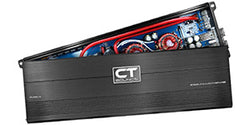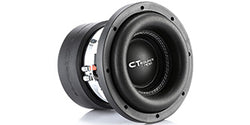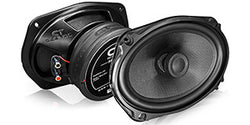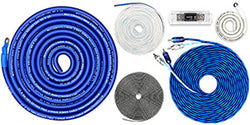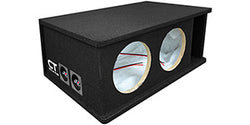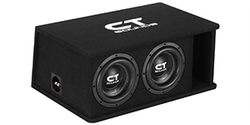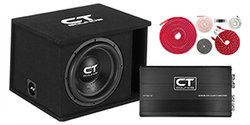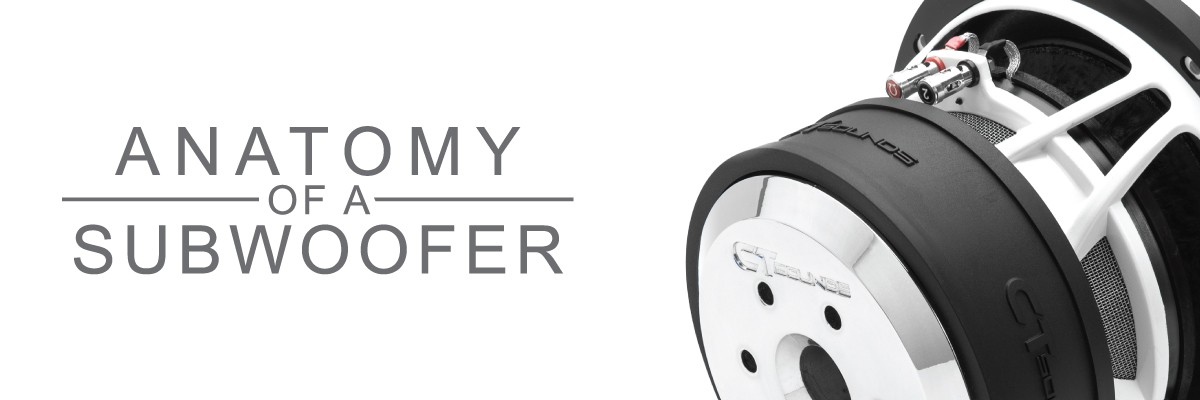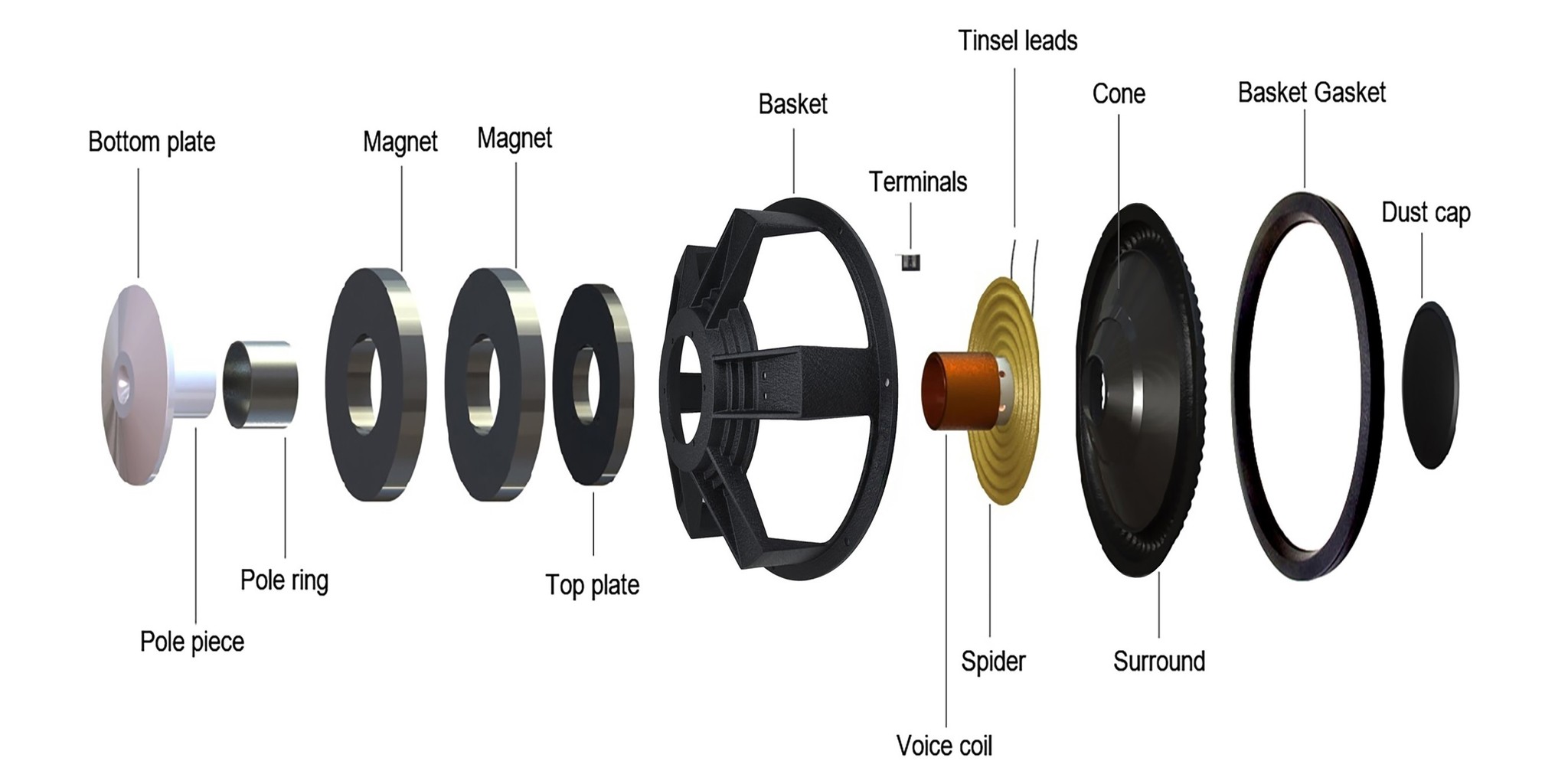Anatomy of a Subwoofer
A subwoofer reproduces low-pitched audio frequencies known as bass and sub-bass. The key parts of a Subwoofer are:
The Dust Cap is a curved dome mounted over the central hole of the loudspeaker diaphragm. It protects the inner mechanics while contributing to the structural integrity of the voice coil and the cone. The dust cap is usually made of the same material as the cone.
The Cone, along with the voice coil, is the only moving part. A wide variety of materials are used, such as Polypropylene, which is lightweight, more rigid than paper, and has a small influence over sound quality. It is the most common material used because of the price and the protection in preventing such things as mold, moisture, and mildew damage; Aluminum and Magnesium cause high pitch resonance and lower frequency. Magnesium is better than aluminum because it is more rigid; Kevlar is exceptionally durable, lightweight, and very flexible. Kevlar can preserve its shape under a lot of pressure; thus, allowing for better sound displacement.
The Surround is part of the sub's suspension system, protects the cone, and prevents the cone from being displaced as it flexes out from the basket. The two main surround types are Treated Foam and Rubber, which enhance the flex and strength properties. But there is also Urethane, Santoprene, and Butyl that are used. Some say foam surrounds are ideal for sound quality and high excursion while rubber surrounds are slightly stiffer, but they last longer.
The Basket is the frame that holds all the components of a subwoofer. The basket's rigidity and resistance to resonance help determine the subwoofer sound quality.
The Spider is a flexible corrugated woven material that exists just below the cone that helps maintain the linear movement of the voice coil. Spiders are generally made of cotton,poly-cotton blend, or conex. The main difference between spiders is the number of corrugations, meaning the valleys and peaks, and the heights, which affect the throw. The wrong spider has the potential to break down quickly and create"spider sag." There are two styles of spiders. The first is the cup spider and is found on less expensive subwoofers. The second is the flat spider, which is used in more expensive/high excursion woofers and result in more linear movement.
The Voice Coil is possibly the most critical piece of a subwoofer. This is the tightly wound spool of wire. It's attached to the cone and the spider and is placed in the magnetic gap in the center of the motor. It has two main parts. The first is former (bobbin), which holds the voice coil. The second is the coils, which create the alternating field within the motor structure. The wire gauge is crucial for determining the power handling of a subwoofer. The wire used for coils comes in three materials: copper, aluminum, and CCA (copper clad aluminum). The glue is essential in keeping the coil from falling off the former.
The Tinsel lead is the electrical wire and requires mechanical flexibility and low current-carrying capacity. The tinsel wire is produced by wrapping several strands of thin metal foil around a flexible nylon or textile core.
The Terminals are the positive and negative wire connection of a subwoofer. There are many types of wire terminals; most popular are spring terminal and ring terminal.
The Magnet is the life force of the speaker. A larger magnet does not always mean the subwoofer is better. What is most important is the counterforce between the top Plate and the Bottom Plate to the voice coil. A ferrous material, like iron, retains a magnetic field. The magnetic field is referred to as flux lines. Subwoofer manufacturers use different kinds of magnets to suit different sizes and to achieve a range of tone qualities. Neodymium: has the greatest field strength of any permanent magnet known. A subwoofer made with these magnets have good frequency response, and because the magnets are strong, you can use smaller magnets, reducing speaker size and weight. The downside is these magnets shatter easily. Ferrite weighs more and costs less while maintaining its magnetic strength over time. Subwoofers with ferrite magnets tend to sound better when played louder. Alnico is an alloy of aluminum, nickel, iron, and cobalt. Alnico is tougher and less prone to cracking than other magnet materials. But, Alnico can lose their magnetism more readily. They are more expensive than ferrite or neodymium and give subwoofers a warm, classic tone. Samarium Cobalt costs more, has the strength of neodymium, and has better heat resistance. Samarium cobalt tends to be as brittle as neodymium, but it stands up better to moisture and corrosion.
The Top Plate is mounted to the underside of the basket and sits above the magnet and directs magnetic flux to the "gap" where the voice coil resides. This works directly with the t-yoke to create a magnetic field. Low carbon steel is the only material used for a top plate.
The Bottom Plate or t-yoke creates the opposing force, the magnetic field along with the top Plate. Ventilation is allowed through a hole (the pole piece) where the air moves back and forth to cool the voice coil. The bottom plate also pulls heat from the voice coil, acting as a heatsink. Both can have a tremendous effect on the power handling of the subwoofer.
The Pole Piece is a structure composed of material of high magnetic permeability that serves to direct the magnetic field produced by a magnet.
The Motor consists of a Top Plate, Magnet, Bottom plate/t-yoke, and the pole piece.
